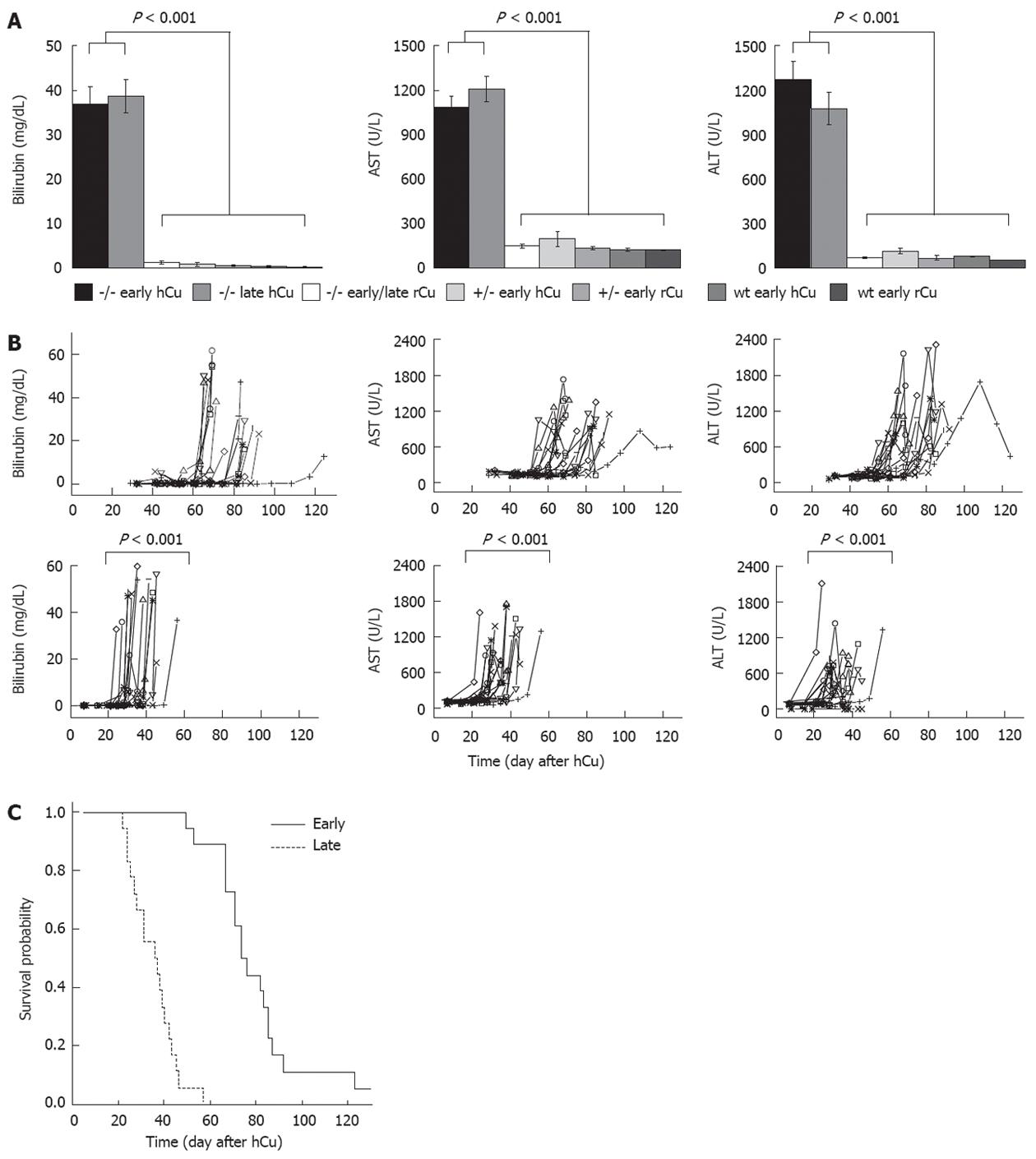Copyright
©2012 Baishideng Publishing Group Co.
World J Gastroenterol. Oct 21, 2012; 18(39): 5542-5550
Published online Oct 21, 2012. doi: 10.3748/wjg.v18.i39.5542
Published online Oct 21, 2012. doi: 10.3748/wjg.v18.i39.5542
Figure 2 High copper regimen induces fulminant hepatitis.
A: Bilirubin, aspartate transaminase (AST) and alanine aminotransferase (ALT) were determined in Long-Evans cinnamon (LEC) rats (-/-), heterozygotes (+/-) or Long-Evans agouti (LEA) rats (wt). Animals received a high copper (hCu) or reduced copper (rCu) diet as an early or late regimen. Median ± SE of maximal values obtained from animals are shown; B: Time course of serum markers in LEC rats that received early (top) or late (bottom) hCu. X-axis represents day after start of hCu. Animals of other groups showed normal levels. Of note, the onset of increased values following late hCu was at day 189 ± 42 after birth. Each line represents one animal. Logrank test using threshold (mean ± SE of LEA rats ×2) was used; C: Kaplan-Meier survival curve of LEC rats receiving an early and late hCu regimen are shown. Survival is represented as day after start of hCu. Of note, age of animals at death in late group was 190 ± 9 d.
- Citation: Siaj R, Sauer V, Stöppeler S, Spiegel HU, Köhler G, Zibert A, Schmidt HH. Dietary copper triggers onset of fulminant hepatitis in the Long-Evans cinnamon rat model. World J Gastroenterol 2012; 18(39): 5542-5550
- URL: https://www.wjgnet.com/1007-9327/full/v18/i39/5542.htm
- DOI: https://dx.doi.org/10.3748/wjg.v18.i39.5542









